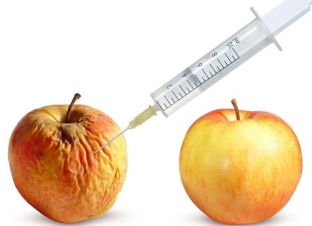Filler injections can safely be called the top procedure in modern aesthetic medicine. With the help of dermal fillers, specialists can recreate missing volumes and thus correct many imperfections in appearance. Enlarge lips, model cheekbones, eliminate wrinkles – this is not a complete list of what fillers are capable of in cosmetology.
That is why every aesthetic medicine specialist should know what fillers are, what they are, and what results can be expected from their use. Estet-portal.com offers you the most comprehensive guide to dermal fillers.
Demanded procedure - injection of fillers in cosmetology
The use of fillers in cosmetology began quite a long time ago – since the middle of the last century, but the popularity of the procedure began to gain & nbsp; only in the 90s. According to the American Society of Plastic Surgeons, in 2014, the frequency of inserting dermal fillers into soft tissues increased by 253% compared to 2000.
Today, more than 50 manufacturers worldwide offer about 160 different injectable fillers.
In order to understand such a variety of products, it is enough to master the basic classification of fillers. This will help specialists to understand for what purposes this or that filler can be used, and what results can be expected from it.
Fillers in cosmetology:
- detailed classification of dermal fillers in cosmetology;
- advantages and disadvantages of different fillers in cosmetology.
Detailed classification of dermal fillers in cosmetology
All dermal fillers in cosmetology can be divided into two large groups: biodegradable, that is, those that dissolve over time, and non-biodegradable – permanent or permanent.
Today, the following main fillers in cosmetology are distinguished:
- collagen-containing fillers – derived from bovine fibroblasts (xenogenic bovine collagen) or human cell cultures (autologous human collagen). It is used to correct small and deep wrinkles in any area of the face, to create contours, to correct post-acne;
- hyaluronic acid fillers (HA-fillers) – obtained by cultivating bacteria and processing cockscombs. Used to fill wrinkles and create volume and contours;
- fillers based on calcium hydroxyapatite – for use in cosmetology, calcium hydroxyapatite microspheres are suspended in a gel-like solution. They are most often used for volumetric plasty of the nasolabial and buccal areas, as well as for rejuvenation of the tissues of the dorsal surface of the hands;
- fillers containing poly-L-lactic acid (PLLA-fillers) – it is an artificial, biocompatible, biodegradable polymer that is injected into the facial area and causes the production of its own collagen. It is used for volumetric plasty of nasolabial, buccal and temporal areas;
- fillers containing polymethyl methacrylate microspheres (PMMA fillers) – for use as a filler, PMMA microspheres are suspended in a gel-like solution that also contains bovine collagen. When injected into soft tissues around the microspheres, areas of fibrosis are formed. Can be used to correct deep wrinkles and nasolabial folds;
- lipofilling – the use of the patient's own fat cells taken, most often from the abdomen, buttocks or thighs, subjected to centrifugation, filtration and washing, followed by their introduction into the tissues of the face. Can be used for volume correction of the cheeks, periorbital and temporal areas, but not used for fine correction;
- silicone – highly purified silicone oil is injected using a micro droplet technique to replenish volumes.

Advantages and disadvantages of different fillers in cosmetology
Each filler in cosmetology has its own advantages and disadvantages, which the beautician must know about:
- collagen-containing fillers give immediate results immediately after injection, but the duration of their effect is only 3 months;
- hyaluronic fillers also give an immediate effect, which increases in the first 7-10 days and lasts up to 6-18 months. Among their shortcomings – the likelihood of the occurrence of complications such as contouring and the creation of the Tyndall effect, as well as the lack of effectiveness in the treatment of lipoatrophy and the correction of large volumes;
- are biocompatible and biodegradable, their effect can be maintained for more than 12 months, they also have good implant shaping characteristics. However, there is always the possibility of lumps and knots when calcium hydroxyapatite fillers are injected into the lips; PLLA fillers
- – have a high duration of effect (from 18 to 24 months), however, the result of the procedure is delayed, and the patient may need additional correction. In addition, there is a possibility of developing nodular elements and granulomatous reactions to the administration of the drug; PMMA fillers
- – their main advantage – a permanent material, but to obtain the effect, several injections are often required, and the result can be fully assessed only 3 months after the procedure. The filler can also sometimes be visualized under the skin, and there is a possibility of allergic reactions; own fat (lipofilling)
- – this is the most natural filler, in addition, fat can be stored, if necessary, for re-injection. But this filler is not effective enough to create contours, and the duration of its effect, which can be from 6 months to 10 years, is impossible to predict; silicone – permanent material, the main disadvantage of which is the impossibility of removal after setting.
The wide range of possibilities of dermal fillers allows you to correct a number of different facial imperfections with their help. estet-portal.com thanks you for your attention!
See also:
"A Quick Guide to Hyaluronic Fillers: How They Differ"





